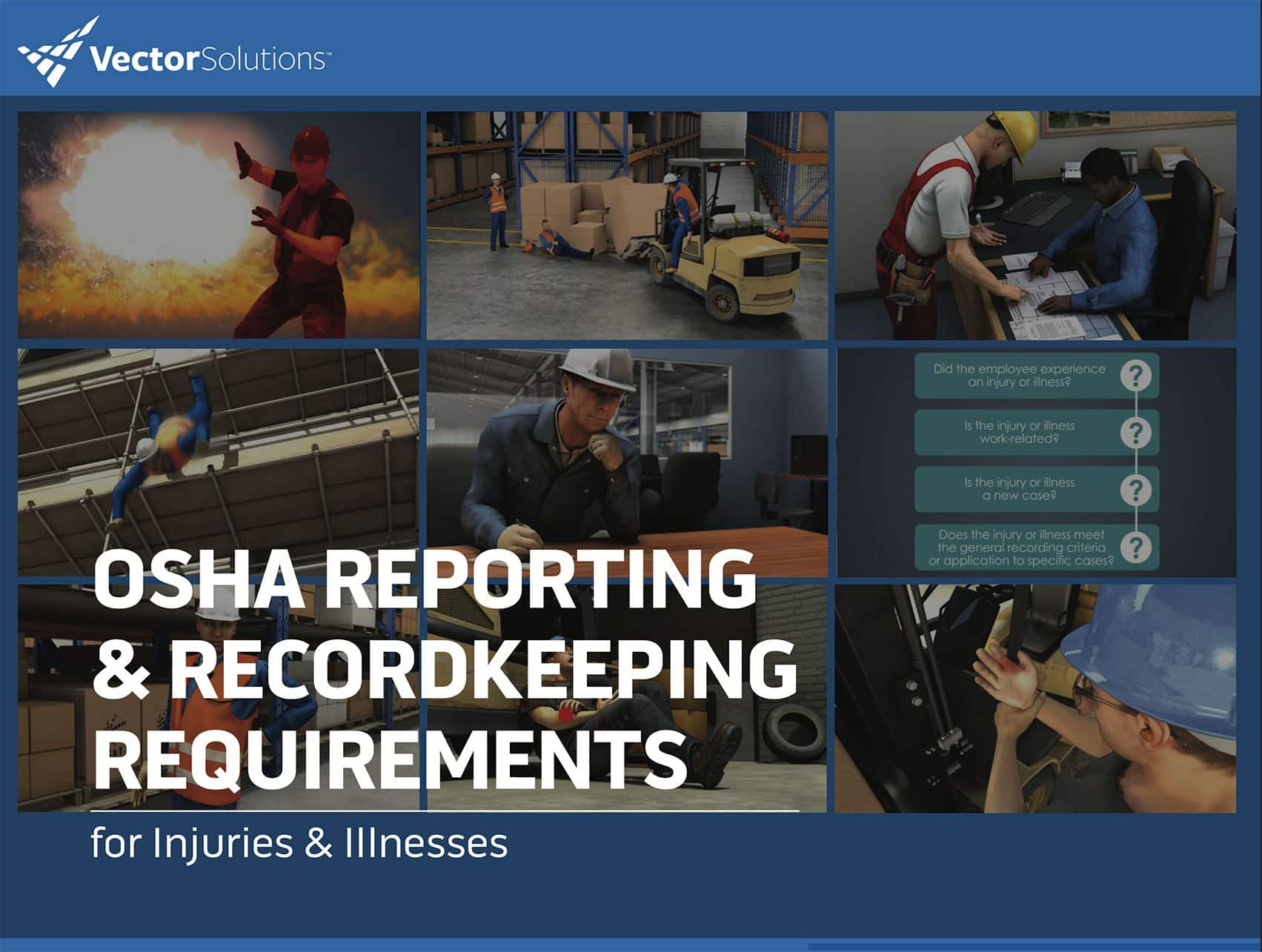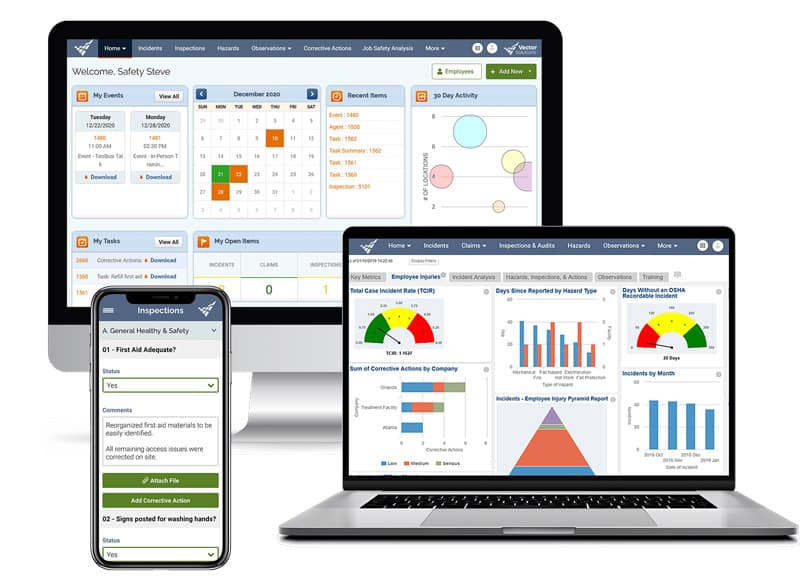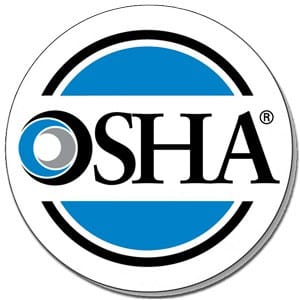August 10, 2023 7 min read

New OSHA Recordkeeping Requirements in 2024
Industry:
Solution:

On July 17, 2023, the U.S. Department of Labor announced a final rule that requires certain employers in designated high-hazard industries to electronically submit injury and illness data– information that they are already required to keep – to the department’s Occupational Safety and Health Administration (OSHA). The reporting requirements apply to establishments (worksites) with 100 or more employees in certain designated industries.
Specifically, the rule applies to employers that fall into industry categories designated by OSHA as “high-hazard” and operate worksites that have a certain minimum number of employees. Covered employers will now be required to electronically submit information from their OSHA Forms 300 and 301 to OSHA annually. Industries that are covered under OSHA’s 2024 changes include (but aren’t limited to):
- Construction
- Manufacturing
- Food Manufacturing
- Utilities
- Transportation
- Healthcare
- Agriculture/forestry
- Grocery stores
- Warehousing and Storage
- Steel and Metals Manufacturing
- Building material and supplies dealers
- Commercial and industrial machinery and equipment (except automotive and electronic) repair and maintenance
Certain industries that are exempt from OSHA’s injury and illness recordkeeping include restaurants, insurers, schools, gas stations, clothing stores, bookstores, and banks.
New OSHA electronic submission rule
- Organizations covered under the new rule must electronically submit to OSHA detailed information about each recordable injury and illness entered on their previous calendar year’s OSHA Form 300 Log and Form 301 Incident Report. This includes the date, physical location, and severity of the injury or illness; details about the worker who was injured; and details about how the injury or illness occurred.
- All the establishments required to submit information from their OSHA Form 300 Log and OSHA Form 301 Incident Report to OSHA under this rule are already required to collect and retain this information on their recordkeeping logs and are currently already required to electronically submit to OSHA information from their OSHA Form 300A Annual Summary.
- Under the new rule, each worksite must also provide their legal company name when submitting their data.
- The data must be electronically submitted through OSHA’s Injury Tracking Application (ITA). There are a few ways to submit the data:
- By filling out a webform on the ITA for each of an organization’s worksites/establishments;
- By submission of a batch csv file containing data for multiple worksites/establishments to the ITA
- The ITA will begin accepting 2023 injury and illness data on January 2, 2024. The due date to complete this submission is March 2, 2024. The submission requirement is annual, and the deadline for timely submission of the previous year’s injury and illness data will be on March 2 of each year.
Which establishments must submit?
- Establishments/worksites that had a peak employment of 100 or more employees during the previous calendar year meet the size criteria.
- The designated industries are listed in Appendix B to Subpart E of 29 CFR Part 1904.
- OSHA also provides an ITA Coverage Application to help establishments determine whether they have to comply with these new requirements.
- The requirements apply to establishments covered by Federal OSHA, as well as establishments covered by states with their own occupational safety and health programs (i.e., State Plans).
OSHA estimates approximately 50,000 establishments are now required to submit their case-specific injury and illness data. OSHA estimates they’ll receive information on approximately 750,000 injury and illness cases annually. Focusing the requirements on establishments with 100 or more employees in higher hazard industries means that fewer than one percent of establishments in the country will submit additional data, but the injury and illness data submitted by those establishments will comprise nearly 30% of all reportable occupational injuries and illnesses.
The Ultimate Guide to OSHA Recordkeeping
Download
Benefits of the new requirements
- Benefits to OSHA: Access to establishment specific, case-specific injury and illness data helps the agency identify establishments with specific hazards. This enables the agency to interact directly with these establishments, through enforcement and/or outreach activities, to address and abate the hazards and improve worker safety and health. The same data will also allow OSHA to better analyze incident trends related to specific industries, processes or hazards. The collection and publication of data from Forms 300 and 301 not only increases the amount of information available for analysis but will also result in more accurate statistics regarding work-related injuries and illnesses, including more detailed statistics on injuries and illnesses for specific occupations and industries.
- Benefits to interested parties: Public access to establishment-specific, case-specific injury and illness data allows employers, employees, potential employees, employee representatives, customers, potential customers, and the general public to make more informed decisions about workplace safety and health at a given organization. In addition, researchers will be better able to identify patterns of injuries, illnesses, and hazardous conditions in workplaces. OSHA believes this access will ultimately result in the reduction of occupational injuries and illnesses.
- OSHA will make most of the data submitted under these new requirements available to the public. OSHA will take multiple steps to protect the identity of injured or ill workers, including:
- OSHA will not collect worker names and addresses;
- OSHA will convert birth dates to age and discard birth dates;
- OSHA will remind employers not to submit information that could directly identify workers, such as names, addresses, telephone numbers, etc.;
- OSHA will withhold from publication the information on age, gender, date hired, and whether the worker was treated in an emergency room and/or hospitalized overnight as an in-patient;
- OSHA will also use automated information technology to detect and remove any remaining information that could directly identify workers
Simplify workplace incident recordkeeping, reporting and tracking with Vector EHS Management.

With Vector EHS Management, safety leaders can:
- Generate and export CSV files of Form 300A, 300, and 301 data in the exact format that OSHA’s Injury Tracking Application requires for easy electronic submission and compliance with OSHA’s 2024 recordkeeping requirements.
- Create recordkeeping forms at the click of a button for simple compliance with OSHA’s general recordkeeping requirements.
- Thoroughly document, streamline and speed up incident investigations. Vector EHS Management’s highly configurable forms allow organizations to record, track, and manage any type of safety incident, including employee, non-employee, and contractor injuries and illnesses; vehicle accidents; and near misses, saving valuable time and reducing administrative burdens associated with manual documentation and tracking processes.
- Ensure they are capturing all required information for recordkeeping logs. For proper recordkeeping and incident management, it’s essential to examine each individual incident and to go through a decision analysis to determine whether an incident should be recorded, as well as ensure the right information for a recordable incident is gathered.
- Vector EHS helps to make it simple for investigators, supervisors, and others who don’t have the necessary expertise with OSHA’s requirements to know what information should be entered. Based on the incident details that investigators record within an incident investigation form, the software also indicates if an incident is OSHA recordable or if the incident’s consequences are severe enough that it must be reported directly to the agency and provides a summary of the information that must be communicated for easy compliance with OSHA’s recordkeeping and reporting requirements.
- Automatically calculate incident rates and monitor trends. Vector EHS’s prebuilt dashboards and scheduled reports empower organizations to automatically calculate and track incident rates and analyze trends to assist organizations in developing more informed incident prevention strategies. EHS managers can automatically calculate and compare their organization’s Total Recordable Incident Rates (TRIR), also known as the OSHA Recordable Incident Rate, across worksites in real time for instant visibility into safety performance.
Thousands of organizations rely on Vector Solutions’ online safety training and EHS Management software to simplify OSHA compliance and foster safer workplaces.
Contact us today to learn how we can help.
EHS Software Buyer's Guide
Download















